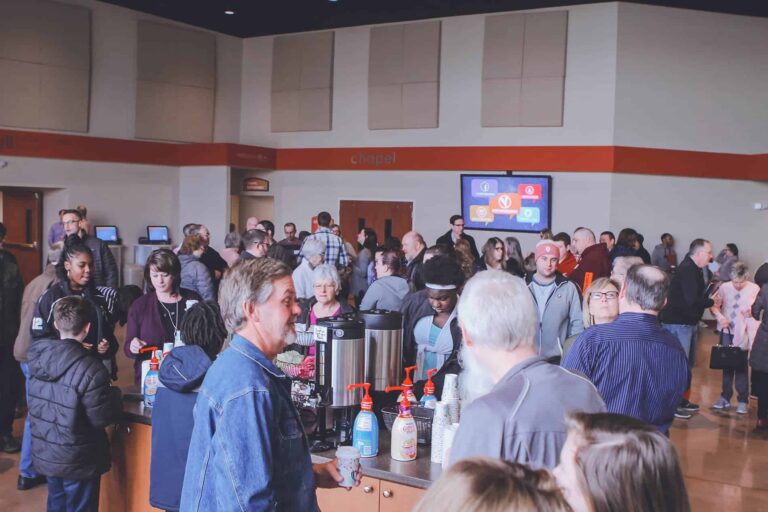Opioid addiction has claimed countless lives, torn apart families, and ravaged communities across the country. Yet, despite its widespread impact, the stigma surrounding opioid addiction continues to persist, preventing many from seeking the help they so desperately need. It’s a disease that doesn’t discriminate—affecting people of all ages, races, and socio-economic backgrounds—but is often met with judgment rather than empathy.
In this post, we’ll explore how opioid addiction affects everyone, why it’s crucial to break the stigma surrounding it, and how compassion, not judgment, is essential for helping those in need.
Addiction is a Disease, Not a Moral Failing
One of the biggest misconceptions about opioid addiction is that it’s a choice or a sign of weakness. In reality, addiction is a chronic disease that alters the brain’s chemistry, affecting decision-making, behavior, and impulse control. People struggling with opioid addiction are often caught in a vicious cycle of dependency and withdrawal, unable to break free on their own.
Like other chronic diseases, such as diabetes or heart disease, addiction requires medical intervention and long-term management. Yet, unlike other health conditions, addiction is frequently met with blame and shame. This stigma not only discourages individuals from seeking treatment but also isolates them from the support systems they need to recover.
The Scope of the Opioid Crisis: It Affects All Demographics
The opioid crisis does not discriminate. It impacts people across all walks of life—young and old, rich and poor, rural and urban. Many begin their journey into addiction with a legitimate prescription for painkillers, following an injury or surgery. Others may be introduced to opioids through experimentation in their teenage years, never expecting that casual use could turn into dependency. Regardless of how it begins, opioid addiction can take hold of anyone, regardless of their background.
Here’s how opioid addiction crosses demographic lines:
- Youth and Adolescents: Young people, especially teenagers, are at a higher risk of opioid misuse as they experiment with substances or find themselves in environments where drugs are easily accessible. Many teenagers are unaware of the risks associated with prescription painkillers, believing that because they are prescribed by doctors, they are safe to use.
- Working Professionals: Opioid addiction often creeps into the lives of working professionals who are prescribed pain medication after an injury or surgery. Many find themselves reliant on opioids to manage chronic pain, unaware of how quickly dependency can form.
- Older Adults: Seniors, too, are vulnerable to opioid addiction, particularly those dealing with chronic pain. Opioids may be prescribed to help manage pain, but the aging body can react differently to these medications, increasing the risk of dependency and misuse.
The opioid epidemic doesn’t only affect individuals—it ripples through families, workplaces, and entire communities. The misconception that opioid addiction only affects a certain “type” of person contributes to stigma, leaving many individuals suffering in silence.
The Role of Stigma in Preventing Recovery
Stigma is one of the biggest barriers to overcoming the opioid crisis. It keeps individuals from seeking the help they need, fearing they will be judged or shamed. Stigma shows up in many forms—whether through derogatory labels like “junkie” or “addict,” assumptions that addiction is a personal failure, or the belief that people with substance use disorders are beyond help.
When individuals struggling with opioid addiction feel stigmatized, they are less likely to reach out for support or pursue treatment. They may internalize feelings of shame, isolation, and worthlessness, which only fuels the cycle of addiction. Breaking free from this cycle requires more than just willpower—it requires compassion, medical care, and community support.
Changing the Narrative: Addiction Requires Compassion
Changing the way we talk about opioid addiction is crucial to breaking the stigma. Addiction is not a moral failing; it is a medical condition that deserves the same level of empathy, care, and support as any other health crisis. By shifting the narrative from blame to understanding, we can encourage more people to seek help and create a supportive environment for recovery.
Here are a few ways we can all contribute to breaking the stigma:
- Use Compassionate Language: Words matter. Instead of using terms like “addict,” “junkie,” or “drug abuser,” use person-first language such as “person with opioid use disorder” or “individual struggling with addiction.” This language acknowledges the person behind the addiction and avoids reducing them to their condition.
- Educate Yourself and Others: Stigma often stems from misunderstanding. Take the time to learn about the science of addiction and the factors that contribute to it. Share this knowledge with others to help dispel myths and promote a more compassionate perspective.
- Support Recovery: Offer your support to those who are struggling with opioid addiction, whether it’s a family member, friend, or colleague. Showing kindness, patience, and understanding can make a world of difference to someone who feels judged or isolated.
Opioid Addiction is Treatable
Perhaps one of the most important messages to convey is that opioid addiction is treatable. With the right resources and support, individuals can and do recover from opioid addiction. This often includes a combination of medication-assisted treatment (MAT), counseling, peer support, and long-term recovery planning.
However, the path to recovery is often a long and challenging one, and those in recovery need support, not judgment. Recognizing addiction as a disease opens the door to solutions—whether through expanding access to treatment centers, offering harm reduction services, or creating peer support networks for those in recovery.
The Role of Communities in Breaking the Stigma
Communities have a crucial role to play in breaking the stigma of opioid addiction. Faith-based organizations, local governments, schools, and healthcare providers can all work together to create supportive environments that encourage individuals to seek help without fear of judgment.
Here’s how communities can get involved:
- Promote Public Awareness Campaigns: Community-wide campaigns can educate the public on the realities of opioid addiction and challenge misconceptions. By highlighting personal stories of recovery, these campaigns humanize the issue and encourage compassion.
- Host Support Groups: Churches, community centers, and other organizations can host peer support groups for individuals in recovery. These groups provide a safe space for individuals to share their experiences and connect with others who understand what they’re going through.
- Advocate for Policy Change: Communities can advocate for policies that support recovery, such as increasing funding for treatment centers, expanding access to medication-assisted treatment, and promoting harm reduction strategies.
Conclusion: A Call for Empathy, Not Judgment
The opioid crisis is one of the most urgent public health challenges of our time, and it requires a collective response rooted in empathy and understanding. Addiction is a disease that affects everyone—whether directly or indirectly—and the stigma surrounding it only serves to deepen the crisis.
By breaking the stigma and approaching opioid addiction with compassion, we can create a culture where people feel supported in seeking help and reclaiming their lives. It’s time to shift the conversation from blame to empathy, from judgment to hope. Together, we can help individuals in recovery and work toward a future where opioid addiction is no longer shrouded in shame, but met with the care and support it deserves.






